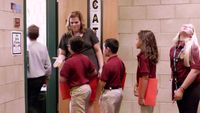 Our staff meeting will be led by Frasier on Mental Health and Suicide. This will fulfill licensure requirements. We will sign up later for all professional learning.
Our staff meeting will be led by Frasier on Mental Health and Suicide. This will fulfill licensure requirements. We will sign up later for all professional learning.Pre-assessment How well do you know your Mental Health Facts?
Check out some information below to frontload your learning.
Mental Health
Tips for Teachers and School Staff from Students with Mental Health and Behavioral Challenges
 Elementary School Teachers Can Improve Students' Mental Health, Study Finds
Elementary School Teachers Can Improve Students' Mental Health, Study Finds
Children's Mental Health Mental Health In Schools: A Hidden Crisis Affecting Millions Of Students
Child Depression
Child Depression Ages 6-12
Suicide
SUICIDE AWARENESS IN ELEMENTARY SCHOOL: SENSE OR NONSENSE?
Anxiety
Trauma
Trauma-Informed Practices Benefit All Students
“Students who have been impacted by trauma carry a very heavy load and operate at a continual high level of stress. For most, their trauma wasn’t a one time incident...it didn’t happen overnight. It happened and continues to happen on a perpetual and long-term basis. Many of our students experienced years of toxic stress in toxic home environments that shifted them into living every moment of everyday in survival mode. Their new “normal” is fear, reactivity and failure. This is how they have survived. It is all they know. The result is that their brains are wired for fear...their brains are not “bad” and their reactivity isn’t necessarily “wrong”. They are products of their environments. They have survival brains and that’s how they enter their classroom every day.Tantrums, Tears, and Tempers: Behavior Is Communication
What do you wonder about?
Please post in the comments on the blog.



